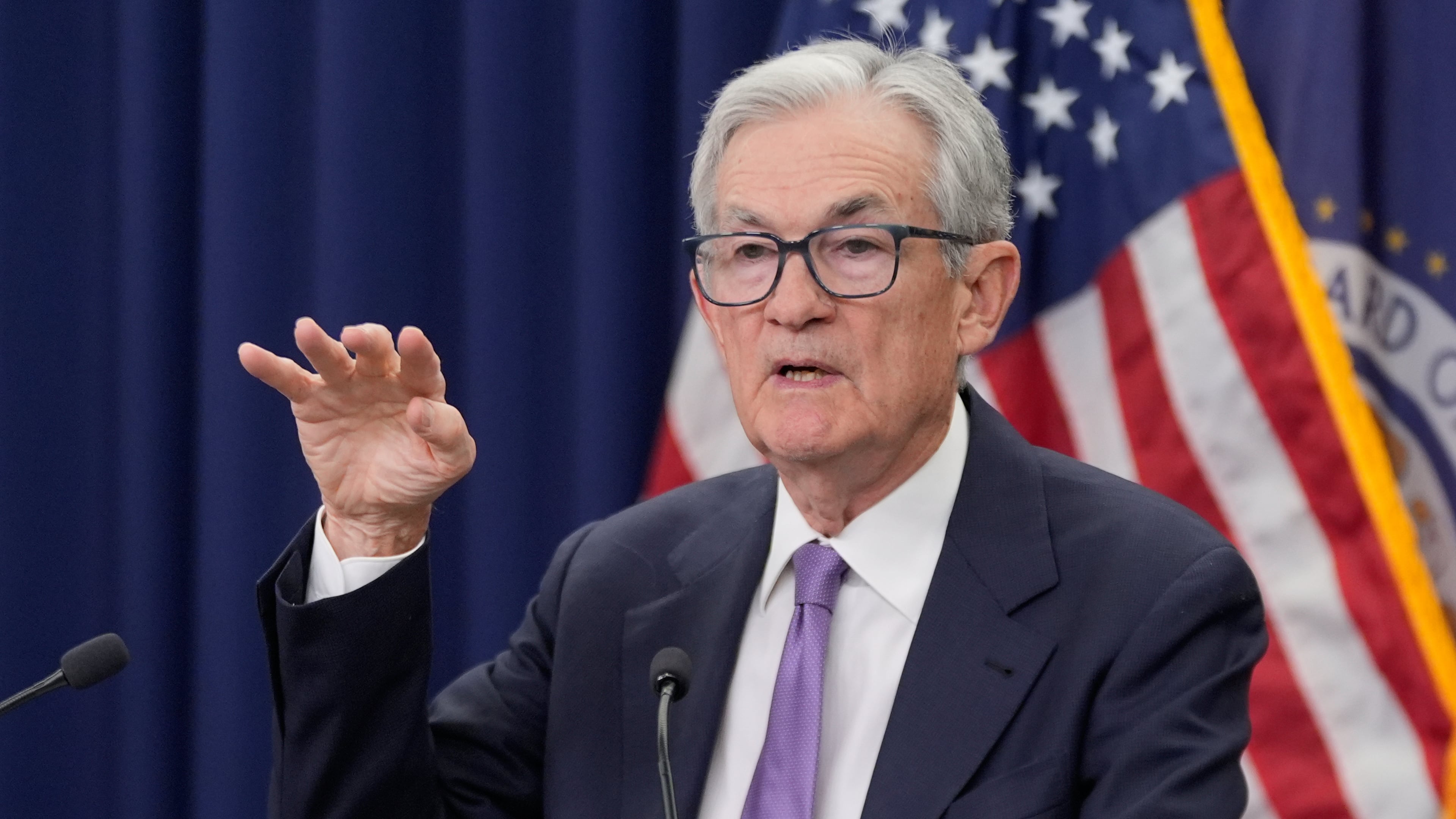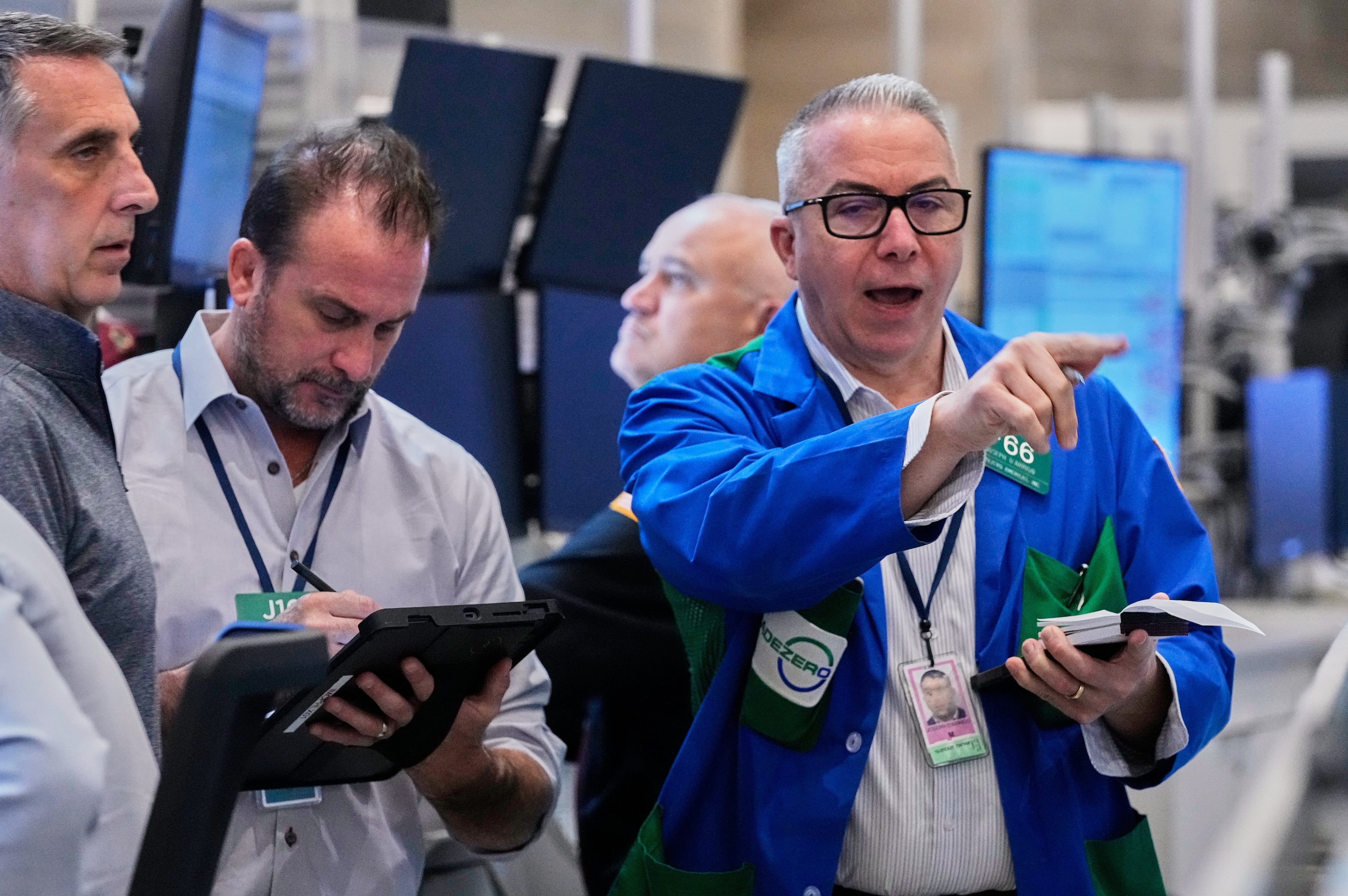Federal Reserve cuts key rate yet Powell says future reductions are not locked in

WASHINGTON (AP) — The Federal Reserve cut its key interest rate Wednesday for a second time this year as it seeks to shore up economic growth and hiring, even as inflation stays elevated.
But Fed Chair Jerome Powell also cautioned that further rate cuts weren’t guaranteed, citing the government shutdown’s interruption of economic reports and sharp divisions among 19 Fed officials who participate in the central bank's interest-rate deliberations.
Speaking to reporters after the Fed announced its rate decision, Powell said there were “strongly differing views about how to proceed in December” at its next meeting and a further reduction in the benchmark rate is not “a foregone conclusion — far from it.”
The rate cut — a quarter of a point — brings the Fed's key rate down to about 3.9%, from about 4.1%. The central bank had cranked its rate to roughly 5.3% in 2023 and 2024 to combat the biggest inflation spike in four decades before implementing three cuts last year. Lower rates could, over time, reduce borrowing costs for mortgages, auto loans, and credit cards, as well as for business loans.
The move comes amid a fraught time for the central bank, with hiring sluggish and yet inflation stuck above the Fed’s 2% target. Compounding its challenges, the central bank is navigating without the economic signposts it typically relies on from the government, including monthly reports on jobs, inflation, and consumer spending, which have been suspended because of the government shutdown.
Financial markets largely expected another rate reduction in December, and stock prices dropped after Powell's comments, with the S&P 500 nearly unchanged and the Dow Jones Industrial Average closing slightly lower.
“Powell poured cold water on the idea that the Fed was on autopilot for a December cut,” said Gennadiy Goldberg, head of U.S. rates strategy at TD Securities. "Instead, they’ll have to wait for economic data to confirm that a rate cut is actually needed.”
Powell was asked about the impact of the government shutdown, which began on Oct. 1 and has interrupted the distribution of economic data. Powell said the Fed does have access to some data that give it “a picture of what’s going on.” He added that, “If there were a significant or material change in the economy, one way or another, I think we’d pick that up through this.”
But the Fed chair did acknowledge that the limited data could cause officials to proceed more cautiously heading into its next meeting in mid-December.
“There’s a possibility that it would make sense to be more cautious about moving (on rates). I’m not committing to that, I’m just saying it’s certainly a possibility that you would say ‘we really can’t see, so let's slow down.’”
The Fed typically raises its short term rate to combat inflation, while it cuts rates to encourage borrowing and spending and shore up hiring. Right now it sees risks of both slowing hiring and rising inflation, so it is reducing borrowing costs to support the job market, while still keeping rates high enough to avoid stimulating the economy so much that it worsens inflation.
Yet Powell suggested the Fed increasingly sees inflation as less of a threat. He noted that excluding the impact of President Donald Trump's tariffs, inflation is “not so far from our 2% goal.” Inflation has slowed in apartment rents and for many services, such as car insurance. A report released last week showed that inflation remains elevated but isn't accelerating.
The government recalled employees to produce the report, despite the shutdown, because it was used to calculate the cost of living adjustment for Social Security.
At the same time, the economy could be rebounding from a sluggish first half, which could improve job growth in the coming months, Powell said. That would make rate cuts less necessary.
“For some part of the committee, it’s time to maybe take a step back and see if whether there really are downside risks to the labor market," Powell said. "Or see whether in fact that the stronger growth that we’re seeing is real.”
Two of the 12 officials who vote on the Fed’s rate decisions dissented Wednesday, but in different directions. Jeffrey Schmid, President of the Federal Reserve Bank of Kansas City, voted against the move because he preferred no change to the Fed’s rate. Schmid has previously expressed concern that inflation remains too high.
Fed governor Stephen Miran dissented for the second straight meeting in favor of a half-point cut. Miran was appointed by President Donald Trump just before the central bank’s last meeting in September.
Trump has repeatedly attacked Powell for not reducing borrowing costs more quickly. In South Korea early Wednesday he repeated his criticisms of the Fed chair.
“He’s out of there in another couple of months,” Trump said. Powell’s term ends in May. On Monday, Treasury Secretary Scott Bessent confirmed the administration is considering five people to replace Powell, and will decide by the end of this year.
The Fed also said Wednesday that it would stop reducing the size of its massive securities holdings, which it accumulated during the pandemic and after the 2008-2009 Great Recession. The change, to take effect Dec. 1, could over time slightly reduce longer-term interest rates on things like mortgages but won't have much overall impact on consumer borrowing costs.
Without government data, the economy is harder to track, Powell said. September's jobs report, scheduled to be released three weeks ago, is still postponed. This month's hiring figures, to be released Nov. 7, will likely be delayed and may be less comprehensive when finally released. And the White House said last week that October's inflation report may never be issued at all.
Before the government shutdown cut off the flow of data, monthly hiring gains had weakened to an average of just 29,000 a month for the previous three months, according to the Labor Department's data. The unemployment rate ticked up to a still-low 4.3% in August from 4.2% in July.
More recently, several large corporations have announced sweeping layoffs, including UPS, Amazon, and Target, which threatens to boost the unemployment rate if it continues. Powell said the Fed is watching the layoff announcements “very carefully.”
___
Associated Press Writer Alex Veiga in Los Angeles contributed to this report.

